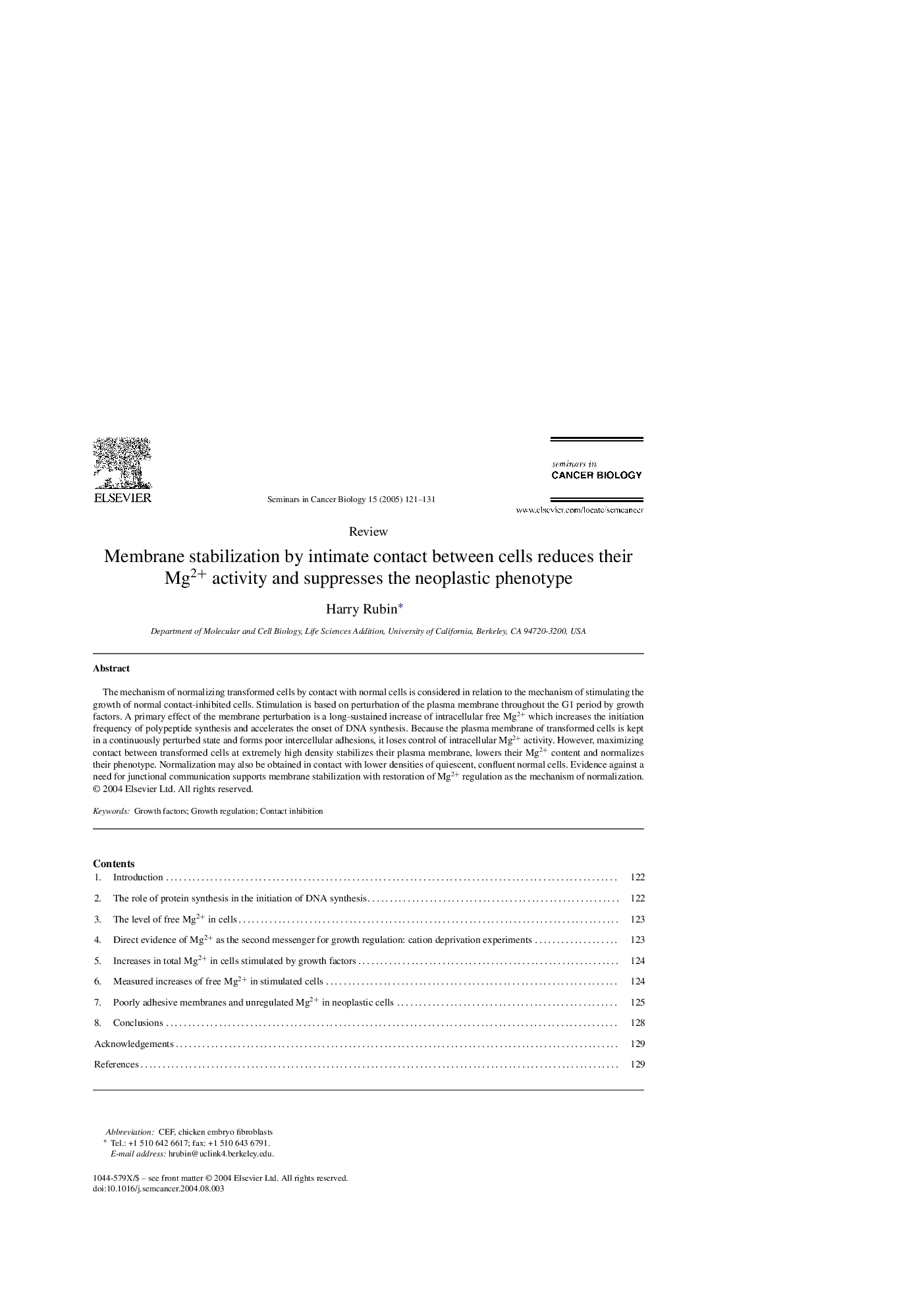| Article ID | Journal | Published Year | Pages | File Type |
|---|---|---|---|---|
| 10845849 | Seminars in Cancer Biology | 2005 | 11 Pages |
Abstract
The mechanism of normalizing transformed cells by contact with normal cells is considered in relation to the mechanism of stimulating the growth of normal contact-inhibited cells. Stimulation is based on perturbation of the plasma membrane throughout the G1 period by growth factors. A primary effect of the membrane perturbation is a long-sustained increase of intracellular free Mg2+ which increases the initiation frequency of polypeptide synthesis and accelerates the onset of DNA synthesis. Because the plasma membrane of transformed cells is kept in a continuously perturbed state and forms poor intercellular adhesions, it loses control of intracellular Mg2+ activity. However, maximizing contact between transformed cells at extremely high density stabilizes their plasma membrane, lowers their Mg2+ content and normalizes their phenotype. Normalization may also be obtained in contact with lower densities of quiescent, confluent normal cells. Evidence against a need for junctional communication supports membrane stabilization with restoration of Mg2+ regulation as the mechanism of normalization.
Related Topics
Life Sciences
Biochemistry, Genetics and Molecular Biology
Biochemistry
Authors
Harry Rubin,
